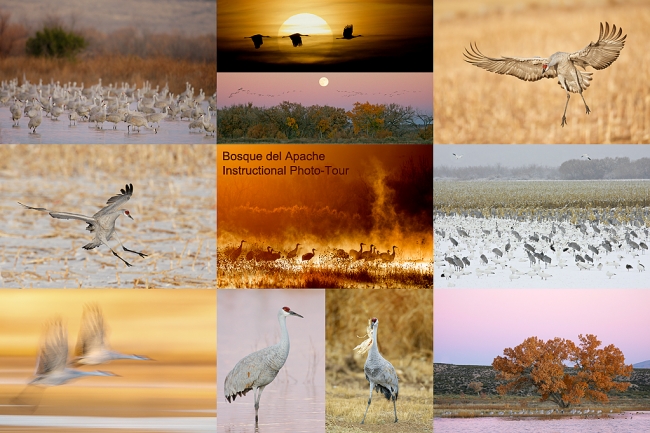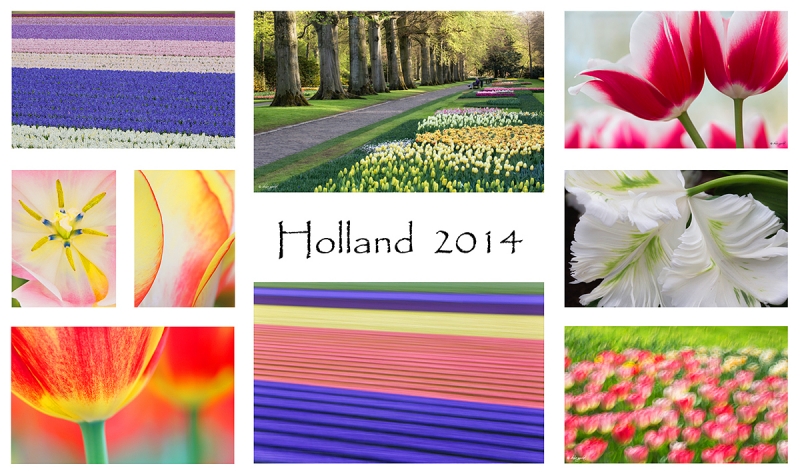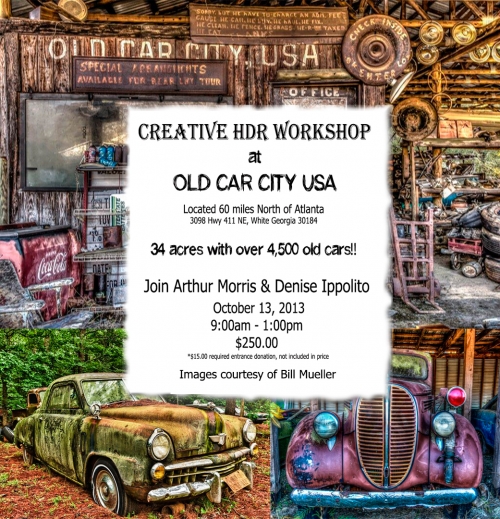no images were found |
|
This 2/3 frame Common Nighthawk image was created at Indian Lake Estates with the with the Canon EF 600mm f/4L IS II USM lens, the Canon 2x EF Extender III (Teleconverter), and the Canon EOS 5D Mark III. ISO 800. Evaluative metering +2/3 stop: 1/160 sec. at f/10 in Manual Mode. Central sensor Expand (by necessity)/AI Servo/Rear Focus on the bird’s eye and re-compose. Click here if you missed the Rear Focus Tutorial. Click on the image to see a larger version. |
Can Less Be More?
When I first began photographing birds my great desire was to create “full frame” images. I quickly learned that stuffing the bird in the frame with the bill tip against one frame edge and the tail tip against the other frame edge is not the way to go. Birds need room in the frame. They need to be able to see into their worlds, to have a place to go. That is why we place the birds back in the frame when working in horizontal format. In The Art of Bird Photography II I suggest that the longest dimension of the bird should never take up more than 3/4 of the frame.
The original of the image above was not as sharp as I would have liked as the tripod was on a bed of pine needles and broken branches. Selective sharpening with a Contrast Mask resulted in an acceptably sharp optimized image. As described of course in detail in
no images were found |
|
This small-in-the-frame Common Nighthawk image was created at Indian Lake Estates with the with the Canon EF 600mm f/4L IS II USM lens, the Canon 2x EF Extender III (Teleconverter), and the Canon EOS 5D Mark III. ISO 800. Evaluative metering +2/3 stop: 1/160 sec. at f/9 in Av Mode. Central sensor Expand (by necessity)/AI Servo/Rear Focus on the bird’s eye and re-compose. Click here if you missed the Rear Focus Tutorial. Click on the image to see a larger version. |
Which Image Do You Like Best?
I made the small-in-the-frame image immediately above before I approached more closely to create the image that opens this blog post. Please leave a comment and let us know which of the two images you like best. And why?
Traveling
Please know that artie will be traveling to and from the Galapagos until July 19th. He will not have any internet access while aboard the Samba from July 3-16th. He will be home briefly July 19-20 before flying to Long Island for the sold out Nickerson Beach Baby Birds IPT. Jim will be in the office every weekday to help you with your mail order purchases and Jen will be here handling IPT registrations. The blog will continue to be active as he has prepared more than a few posts for you in advance for you to enjoy during his absence.
If you have a gear or an image processing question please e-mail me after July 19th.
|
Sandhill Crane composite, Bosque del Apache NWR, San Antonio, NM. Click on the image for a larger version. |
Bosque del Apache 2013 IPT: “The Complete Bosque Experience.” NOV 26-DEC 2, 2013. 7-FULL DAYS: $3399. Co-leader: Denise Ippolito. Introductory Slide program: 6:30 pm on 11/25. Limit: 12.
Tens of thousand of Snow Geese, 10,000 Sandhill Cranes, ducks including point-blank American Wigeon and Wood Duck, amazing sunrises, sunsets, and blast-offs. Live, eat, and breathe photography with one of (if not the) world’s premier photographic educators at one of his very favorite locations on the planet. Top-notch Photoshop instruction. This will make 19 consecutive Novembers at Bosque for me. Nobody knows the place better than I do. Join us to learn to think like a pro, to recognize situations and to anticipate them based on the weather, especially the sky conditions, the light, and the wind direction. Every time we make a move we will let you know why. When you head home applying what you learned will prove to be invaluable. Includes all lunches and the Thanksgiving Buffet at the Crowne Plaza in Albuquerque. I hope that you can join me for what will be an unparalleled learning experience.
A $500 non-refundable deposit is required to hold your slot for this IPT. Your balance is due 4 months before the date of the IPT and is also non-refundable. If the trip fills, we will be glad to apply a credit applicable to a future IPT for the full amount less a $100 processing fee. If we do not receive your check for the balance on or before the due date we will try to fill your spot from the waiting list. If your spot is filled, you will lose your deposit. If not, you can secure your spot by paying your balance.
Please print, complete, and sign the form that is linked to here and shoot it to us along with your deposit check (made out to “Arthur Morris.”) You can also leave your deposit with a credit card by calling the office at 863-692-0906. If you register by phone, please print, complete and sign the form as noted above and either mail it to us or e-mail the scan. If you have any questions, please feel free to contact me via e-mail.
|
Images copyright 2012: Denise Ippoltio & Arthur Morris. Card design by Denise Ippolito. Click on the image to enjoy a spectacular larger version. |
Holland 2014 7 1/2-Day/8-Night: A Creative Adventure/BIRDS AS ART/Tulips & A Touch of Holland IPT. April 17-April 24, 2014 :$4995 Limit: 12 photographers/Openings 9
This trip needs 8 registrants to run so please do not purchase your plane tickets until you hear from us; right now we need 5 more folks.
Join Denise Ippolito, Flower Queen and the author of “Bloomin’ Ideas,” BPN Photo Gear Moderator, former Nikon shooter, and technical expert Peter Kes, and Arthur Morris, Canon Explorer of Light and one of the planet’s premier photographic educators for a great trip to Holland in mid-April 2014. Day 1 of the IPT will be April 17, 2014. We will have a short afternoon get-together and then our first photographic session at the justly-famed Keukenhof. Peter who is originally from Holland, will be our local guide/interpreter/driver. Most days we will return to the hotel for lunch, image sharing and a break. On Day 8, April 24, we will enjoy both morning and afternoon photography sessions.
The primary subjects will be tulips and orchids at Keukenhof and the spectacularly amazing tulip, hyacinth, and daffodil bulb fields around Lisse. In addition we will spend one full day in Amsterdam. There will be optional visits the Van Gogh Museum in the morning and the Anne Frank House in the afternoon; there will be plenty of time for street photography as well. And some great food. On another day we will have a wonderful early dinner at Kinderdijk and then head out with our gear to photograph the windmills and possibly some birds for those who bring their longs lenses. We will spend an afternoon in the lovely Dutch town of Edam where we will do some street photography and enjoy a superb dinner. All lodging, ground transportation, entry fees, and meals (from dinner on Day 1 through dinner on Day 8) are included.
For those who will be bringing a big lens we will likely have an optional bird photography afternoon or two or possibly three. The big attraction should be gorgeous Purple Herons in flight at a breeding marsh. We would be photographing them from the roadside. And we might be able to find a few Great-crested Grebes at a location near Keukenhof.
Click here for complete details and some previously unpublished images. And/or click here and see item one for lots more tulip photos and complete trip details.
|
Images courtesy of and copyright 2012: Bill Mueller. Card design by Denise Ippolito. |
Old Car City Creative Photography In-the-Field HDR Workshop: Sunday, October 13, 2013/ 9am till 1pm.
White, Georgia: $250 plus a $15 entrance fee donation (cash only on the day of the event) that will go to charity. Limit: 16 photographers.
On October 13, 2013, Arthur Morris/BIRDS AS ART and Denise Ippolito/A Creative Adventure will be conducting an In-the-Field HDR Workshop at Old Car City in White, Georgia. Old Car City is about an hour north of Atlanta, GA and an hour south of Chattanooga, TN where they will, as noted above, be doing a full day seminar for the Photographic Society of Chattanooga on Saturday, October 12th. Click here for complete details.
Typos
On all blog posts, feel free to e-mail or leave a comment regarding any typos, wrong words, misspellings, omissions, or grammatical errors. Just be right. 🙂
Support the BAA Blog. Support the BAA Bulletins: Shop B&H here!
We want and need to keep providing you with the latest free information, photography and Photoshop lessons, and all manner of related information. Show your appreciation by making your purchases immediately after clicking on any of our B&H or Amazon Affiliate links in this blog post. Remember, B&H ain’t just photography!




Support the Blog


Amazon
Everyone buys something from Amazon, be it a big lens or deodorant. Support the blog by starting your search by typing in the little white box below. No purchase is too small to be appreciated; they all add up. Why make it a habit? Because I make it a habit of bringing you new images and information on an almost daily basis.
And from the BAA On-line Store:
LensCoats. I have a LensCoat on each of my big lenses to protect them from nicks and thus increase their re-sales value. All my big lens LensCoat stuff is in Hardwood Snow pattern.
LegCoat Tripod Leg Covers. I have four tripods active and each has a Hardwood Snow LegCoat on it to help prevent further damage to my tender shoulders 🙂 And you will love them in mega-cold weather….
Gitzo GT3532 LS CF Tripod. This one replaces the GT3530LS Tripod and will last you a lifetime. Learn more about this great tripod here.
Mongoose M3.6 Tripod Head. Right now this is the best tripod head around for use with lenses that weigh less than 9 pounds. For heavier lenses, check out the Wimberley V2 head.
Double Bubble Level. You will find one in my camera’s hot shoe whenever I am not using flash.
The Lens Align Mark II. I use the Lens Align Mark II pretty much religiously to micro-adjust all of my gear an average of once a month and always before a major trip. Enjoy our free comprehensive tutorial here.
BreezeBrowser. I do not see how any digital photographer can exist without this program.
Delkin Flash Cards. I use and depend on Delkin compact Flash Cards and card readers most every day. Learn more about their great 700X and 1000X cards here or about my favorite Delkin card here.

















Both images are nice, but I prefer the first. To me, the first image better portrays the texture of the conifer branch, and shows how well the bird blends into it. When I see nighthawks resting like this, I’m struck by how the feather patterns seem to be an extension of whatever texture the bird has chosen for resting, and that’s why I prefer the first image.
Artie,
My personal preference would fall somewhere in between the two images, I love the detail in image #1 and just seeing feather detail can tell such a great story about a bird. For some reason my minds eye is drawn to the second image, and I like the thought of a wide format aspect ratio…something like 1:3. I think this would really keep the branch in play but will still keep focus on the bird as the main subject. I would also make sure that the crop would not include the epiphytes in their entirety similar to what you have on the right side of image #1, but I would make sure most of the visual weight was on the right hand side to give the bird room to see/escape to the left. The birds eye fairly centered left to right but above the horizontal centerline. Let’s say around the 2/3’s mark.
But hey…That’s just my thought.
Thanks,
WR
To me, the second image is vastly superior, at least from an artistic standpoint. The second image elicits, is evocative, and has some spark to it. The first image is a well-executed picture of a bird. I’ll go with door #2 any day of the week. Well done, Commander Morris.
Hi Artie,
Both mages are excellent. The most interesting thing about Digital is you can show both images and many more combinations the way you like it.
David
I like the first image only because there are many distracting elements in the second. My personal preference would be to remove about 10% of the surrounding image and place the birds head in the center of the frame. All subjective, but that’s what I prefer. Envious that I have yet to find any nightjars to photograph despite the fact the Chuck-will’s-widows are annual visitors to the pine woods immediately behind my home.
I prefer the first image because of the pleasing background, the warmth of the overall coloring, the bird’s presence, which is immediate and affecting, and the detail, which is echoed in the various elements. Even though all the aspects of the photo are immediately seen, the viewer doesn’t move on but continues to consider and appreciate the photo, held by the bird’s eye.
Heck, I think they both work.
I’ve always loved birds big in the frame to show the greater
detail in the birds feathers, etc.
#2 also works because it shows more of the habitat and can
create a more artful type of image.
Doug
I prefer the first photo. There’s too much empty space in the second photo, and it draws away from the subject.
Hi Artie,
I like the first image the best.
The background is much cleaner and less distracting
Than the second image, and helps to provide more contrast.
The detail in the bird is more evident.
And it portrays a stronger sense of how well
the bird is camouflaged against the branch.
Never haven seen this bird before, I like the 1st image for the detail. However, I also like the 2nd image for the bird in its environment. Therefore, I have no favorite and really like them both.
Can Less be More?
If less is more, is nothing everything?
I like the detail of the bird in the first image. I might be tempted to move the bird to the right (expand the left side & maybe cut off a little on the right) to reduce the center perspective.
With 3x as much room in front of the bird as behind, the bird is not at all centered 🙂
Perspective rather than physically centered.
I do not understand that term 🙂
A mental view of an object which occurs due to the representation of three-dimensional objects and depth relationships on a two-dimensional surface.
Jerking my chain, me thinks.
Not jerking your chain at all. I still have no clue what you are talking about. Does anyone else? artie
I think the second image is very nice. More of an environmental image. I like the placement of the bird between the epiphytes and agree they add to the image. That being said I think I prefer the first image as the detail of the bird is wonderful. I have yet to see one of these birds and know they can be hard to photograph and so to be able to see such a nice close up is a treat.
Hi Artie,
I go with the first image. The second one is to busy and take away from the subject. Also the eye always goes to the brighter area of the print and the first image removes most of that distraction from the bright areas.
By keeping it clean, we know right away what is the main subject. I would also darken up the background to bring more attention to the subject.
Don
Don Poggensee
Wind Rider Images
50 years as a traveling Photographer Next June 2014
I definitely like the second photo (small in-the-frame) best. The bird’s head is at a good angle, and the two epiphytes really add to the scene without distracting from the bird. My personal preference is to have a part of the bird’s environment in the photo without it being distracting.